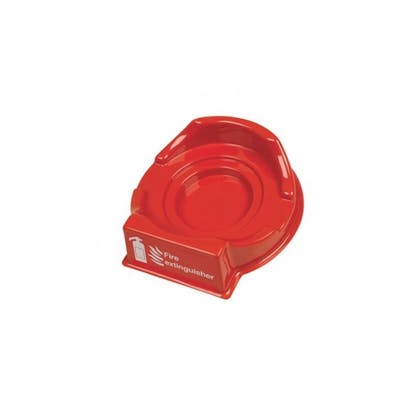How do I conform to British Standards?
To comply with British Standards, extinguishers should be either wall mounted or located within a stand designed for such a purpose. Wall affixing and stands (secured or freestanding) discourages people from moving them, such as using them to prop doors open.
Should I use a stand or wall mount for my fire extinguishers?
British Standards state that fire extinguishers should be either wall mounted or placed on stands.
Fire extinguisher stands are usually used when wall mounting is not possible, when the location is likely to change, or for temporary fire points.
Alternatively, wall mounting may be preferred as taking up less floor space when compared to a freestanding point.
Where should I locate my fire extinguishers within my premises?
Water-based and CO2 fire extinguishers should be placed by emergency exits or fire alarm call points.
British Standards (BS5306) stipulate that building occupants should be no more than 30 metres from a fire extinguisher on any given level of a premises, should your building have more emergency exits or fire alarm call points than the number of extinguishers you need.
Specialist fire extinguishers, such as wet chemical or dry powder, must always be within easy reach of the specific fire hazard. These include substances such as flammable liquids, gases, or cooking oils.
How many fire extinguisher points are required within my premises?
British Standards (BS5306) stipulate that 2 Class A fire extinguishers are available on every floor of a building. Class A fires are caused be substances such as wood, paper, straw, and textiles.
Fire extinguishers in this range include powder, foam, and water extinguishers. Your company would require a combination of any 2 of these for each floor of your business premises.
Small premises – kiosks and food trucks – are an exception, where the presence of 2 fire extinguishers might block emergency exit routes.














